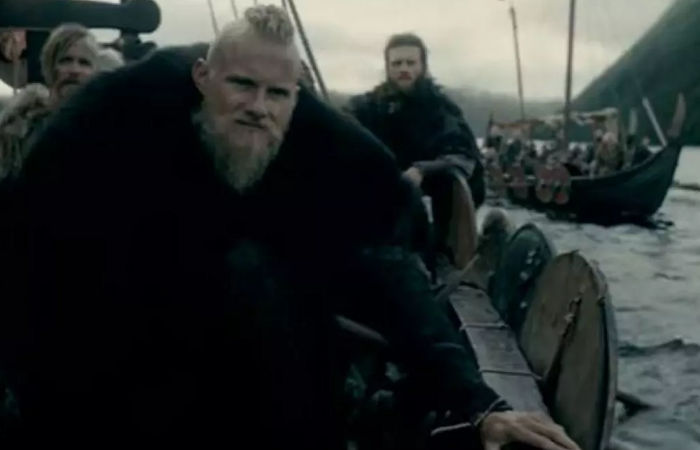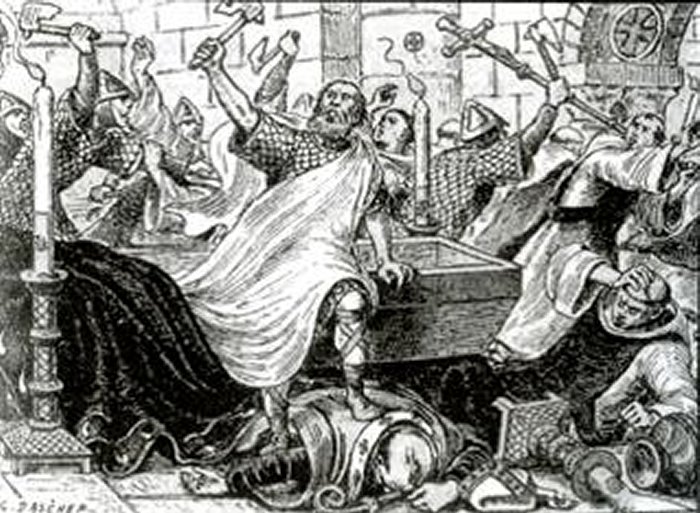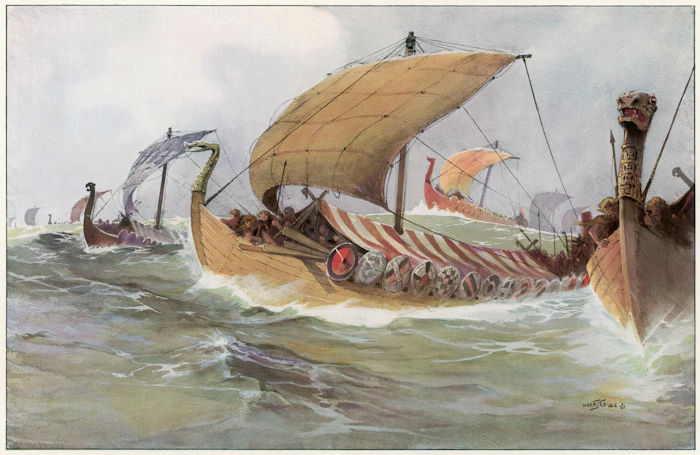Bjorn Ironside: Famous Viking Who Captured Luna By Mistake Instead Of Ancient Rome As Planned
Ellen Lloyd - AncientPages.com - Bjorn Ironside was the son of the famous Sea King Ragnar Lodbrok.
Bjorn Ironside is today remembered for his cunning tactics when his Viking warriors captured Luna, the ancient city of Etruria, Italy. However, this was different from what he planned from the start.
Alexander Ludwig plays Bjorn Ironside in the series Vikings. Credit: IMD
His initial plan was to capture ancient Rome, but things turned out differently than Bjorn Ironside expected. Capturing Luna instead of Rome was, in fact, an embarrassing mistake that made him furious.
Who Was Bjorn Ironside?
Bjorn (Björn Järnsida in Swedish) was a legendary king of Sweden who lived sometime in the 9th century. He was also the first ruler of the Swedish Munsö dynasty. Like his father, Ragnar Lodbrok, Bjorn Ironside was a fearless warrior and fierce ruler. He was considered a great Viking Chief and Naval Commander. He raided and pillaged many places in France, Spain, Italy, England, and Wales, including ancient cities in the Mediterranean Sea and the coasts of North Africa.
Ironside was deeply impressed with Ragnar Lodbrok’s conquest of Paris and wished to achieve something of equal importance. So, he decided to plunder ancient Rome, one of the most influential and wealthy cities at the time.
After entering the church, Hastein jumped out of the “coffin” surprising everyone and fought his way to the city gates. Credit: Public Domain
In 859, a vast Viking fleet of 62 ships led by Bjorn Ironside and Hastein set course towards the Mediterranean.
After raiding down the Iberian coast and fighting through Gibraltar, Bjorn and Hastein pillaged the south of France, where his fleet over-wintered, before landing in Italy, where they captured the coastal city of Pisa.
Bjorn Ironside And Hastein Attack Luna
Ancient Rome was now the target. Bjorn Ironside knew it would be tough to get to the city, and it was heavily guarded, and his Viking warriors would need help breaching the walls.
So, Ironside and Hastein came up with a cunning plan. Hastein sent messengers to the city’s bishop. When the Vikings approached the terrified clerics, they said.” We have not come here to plunder. We have no strength left. We are exhausted, and all we want is peace. Allow us to buy what we need. Our chief is very ill. He is dying. He had a deathbed conversion and wishes to receive Christian sacraments and to be buried on the consecrated ground within your church.”
Upon hearing this, the relieved priests allowed the Vikings to enter the city. The “body” of Hastein was brought in by a small group of guards who, according to some accounts, carried swords under their robes. After entering the church, Hastein jumped out of the “coffin,” surprising everyone, and fought to the city gates. He then opened the gates to let his Norse warriors in.
The city’s residents had no chance to withstand the Vikings’ attack. All resistance was crushed, and the city was now in the hands of the Vikings. Hastein was utterly pleased and demanded all residents to kneel before him and pay homage to him as the ruler of Rome. No one said anything except for one person who dared to speak up. He explained to the Vikings this city was not Rome but Luna. In their eagerness to conquer the world’s most powerful city, the Vikings had sailed more to the north than they should have.
Bjorn Ironside and his brother Ivar the Boneless sailed to England to seek revenge for their father's death. Credit: Adobe Stock - Archivist
Hastein was furious when he heard this. He roared that Luna would be punished for this. He gave the order to plunder the city of everything and then set Luna on fire. Residents were to be enslaved, and if there wasn’t enough room on the ships, they would be slaughtered. Ironside’s Viking fleet raided Sicily and the coasts of North Africa. According to some sources, Bjorn Ironside and Hastein reached Alexandria, Egypt.
The Viking fleet had been plundering for three years, and the Norse warriors were tired and eager to return home. On their way back home, they encountered the navy forces of Al-Andalus at the Straits of Gibraltar. The Muslim fleet was ready and waiting to attack the Vikings.
It was an unfortunate encounter for Bjorn and his men as they were hit by a mighty weapon called Greek fire. The encounter with the Muslims was a disaster that ended as a massacre.
When the Viking fleet finally managed to escape, only 20 of the ships had survived the brutal and powerful Muslim forces. Bjorn Ironside wanted to restore the morale of his warriors and ordered his men to plunder the Christian parts of Spain. Then, the Vikings conquered Pamplona and demanded a large ransom to release the city prince. The Viking ships were once again loaded with priceless treasures.
In 862, the Bjorn Ironside and Hastein finally reached France again. Before their adventures in the Mediterranean Sea, they considered France an enemy, but now it felt almost like coming home.
Bjorn Ironside And Ivar The Boneless Revenged Their Father’s Death
After the huge success his sons Ivar the Boneless and Bjorn Ironside achieved through many raids across Europe and the Mediterranean Sea, Ragnar Lothbrok became jealous of his sons and did not want his sons to rule Sweden. He assigned Eysteinn Beli as a surrogate king and set sail to raid the Kingdom of Northumbria and defeat his long-time enemy, King Aella.
However, Icelandic sagas and early English sources state Ragnar was eventually captured by the Anglo-Saxon Christian king Aella of Northumbria. It is said that Ragnar was shipwrecked on the Northumbrian coast. He and his crew survived the wreck, but after meeting the Northumbrians in battle, most of his men were killed, and he was captured by Aelle, King of Northumbria, who ordered him executed by throwing him into a pit filled with poisonous snakes.
Bjorn Ironside defeated Eysteinn Beli and became the King of Sweden. In the Kingdom of Northumbria, Bjorn Ironside and Ivar, the Boneless, sought revenge for the murder of their father.
Viking forces raided Northumbria and captured King Aella alive.
The brothers decided that “the blood eagle” would be a suitable punishment for King Aella. They cut and opened King Aella’s spine, broke his ribs, and pulled his lungs out as the brutal ceremony of blood eagle required and watched the king die.
When Bjorn Ironside and his brothers returned to Scandinavia, they divided the kingdom so that Bjorn Ironside took Uppsala and Sweden.
Bjorn had two sons, Refil and Erik Björnsson, and Erik became the next king of Sweden after Bjorn’s death.
Written by Ellen Lloyd – AncientPages.com
Updated on January 13, 2024
Copyright © AncientPages.com All rights reserved. This material may not be published, broadcast, rewritten or redistributed in whole or part without the express written permission of AncientPages.com
Expand for referencesReferences:
University Press Biographies, Björn Ironside: The Extraordinary Viking
More From Ancient Pages
-
 Ice Age Teens Experienced Puberty Stages Similar To Modern Adolescents, Study Reveals
Archaeology | Sep 13, 2024
Ice Age Teens Experienced Puberty Stages Similar To Modern Adolescents, Study Reveals
Archaeology | Sep 13, 2024 -
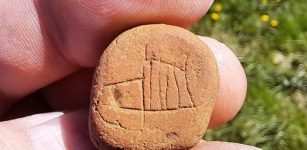 Small Stone Carved With A Viking Ship May Be Oldest Picture Ever Found In Iceland
Archaeology | Jun 16, 2023
Small Stone Carved With A Viking Ship May Be Oldest Picture Ever Found In Iceland
Archaeology | Jun 16, 2023 -
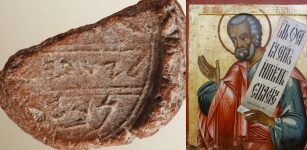 Ancient Seal Offers First Biblical Evidence Of The Prophet Isaiah?
Archaeology | Feb 27, 2018
Ancient Seal Offers First Biblical Evidence Of The Prophet Isaiah?
Archaeology | Feb 27, 2018 -
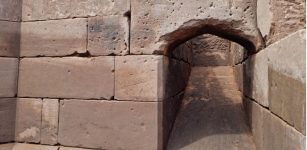 Unexpected Archaeological Discovery May Re-Write English Civil War History
Archaeology | Feb 3, 2023
Unexpected Archaeological Discovery May Re-Write English Civil War History
Archaeology | Feb 3, 2023 -
 Finds From Archaeological Dig Were Deliberately Hidden From The Public, Says Man Who Participated In The Excavations
Featured Stories | Dec 3, 2024
Finds From Archaeological Dig Were Deliberately Hidden From The Public, Says Man Who Participated In The Excavations
Featured Stories | Dec 3, 2024 -
 The Magnificent Yule Goat In Gävle, Sweden Has Finally Arrived
Christmas Traditions | Dec 2, 2024
The Magnificent Yule Goat In Gävle, Sweden Has Finally Arrived
Christmas Traditions | Dec 2, 2024 -
 Ancient Cosmic Event And Unearthed Artifacts May Solve An Enduring Viking Mystery
Vikings | Dec 12, 2024
Ancient Cosmic Event And Unearthed Artifacts May Solve An Enduring Viking Mystery
Vikings | Dec 12, 2024 -
 Soft Tissue From A 183 Million-Year-Old Jurassic Plesiosaur – Analysed
Fossils | Feb 24, 2025
Soft Tissue From A 183 Million-Year-Old Jurassic Plesiosaur – Analysed
Fossils | Feb 24, 2025 -
 Ancient City Of Gordium, Gordian Knot And Skeleton In Tumulus Of King Midas
Civilizations | Sep 20, 2018
Ancient City Of Gordium, Gordian Knot And Skeleton In Tumulus Of King Midas
Civilizations | Sep 20, 2018 -
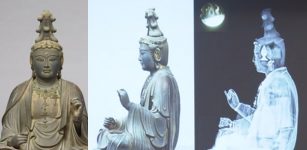 Mysterious Scrolls And Artifacts Discovered Inside Ancient Buddha Statuette
Archaeology | May 9, 2018
Mysterious Scrolls And Artifacts Discovered Inside Ancient Buddha Statuette
Archaeology | May 9, 2018 -
 Mysterious Camerano Underground City – Secret Meeting Place For Knights Templar?
Featured Stories | Dec 13, 2017
Mysterious Camerano Underground City – Secret Meeting Place For Knights Templar?
Featured Stories | Dec 13, 2017 -
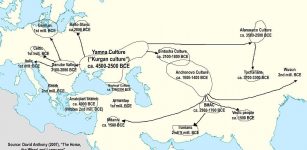 Mystery Of Ancient Language PIE From Which Half Of All Languages Originate
Featured Stories | Apr 3, 2017
Mystery Of Ancient Language PIE From Which Half Of All Languages Originate
Featured Stories | Apr 3, 2017 -
 4,000-Year-Old Babylonian Tablets Finally Deciphered, Revealing Dangerous Future Predictions
Archaeology | Aug 14, 2024
4,000-Year-Old Babylonian Tablets Finally Deciphered, Revealing Dangerous Future Predictions
Archaeology | Aug 14, 2024 -
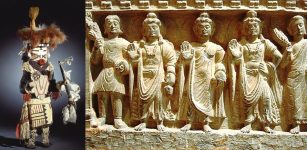 Mysterious Zuni Indians And Japanese People May Be Related – Did Buddhist Monks Reach North America In 1350?
Civilizations | Dec 26, 2017
Mysterious Zuni Indians And Japanese People May Be Related – Did Buddhist Monks Reach North America In 1350?
Civilizations | Dec 26, 2017 -
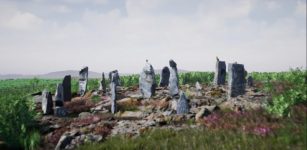 Star-Shaped Magnetic Anomaly At Hidden Stone Circle In The Outer Hebrides Gives New Insight Into Ancient Beliefs
Archaeology | Jan 2, 2020
Star-Shaped Magnetic Anomaly At Hidden Stone Circle In The Outer Hebrides Gives New Insight Into Ancient Beliefs
Archaeology | Jan 2, 2020 -
 Ancient Giants In Ecuador Were Killed By Fire From The Sky – Indian Legends Reveal
Ancient Mysteries | Dec 12, 2017
Ancient Giants In Ecuador Were Killed By Fire From The Sky – Indian Legends Reveal
Ancient Mysteries | Dec 12, 2017 -
 4,500-Year-Old Row Of Giant Monoliths Found – Could Be the Largest In Britain
News | Sep 7, 2015
4,500-Year-Old Row Of Giant Monoliths Found – Could Be the Largest In Britain
News | Sep 7, 2015 -
 Evidence Humans Walked The Great Plains 18,000 Years Ago May Have Been Found – Archaeologists Say
Archaeology | Mar 14, 2022
Evidence Humans Walked The Great Plains 18,000 Years Ago May Have Been Found – Archaeologists Say
Archaeology | Mar 14, 2022 -
 Ekambareswarar Temple In Tamil Nadu, India Dedicated To Lord Shiva
Featured Stories | May 10, 2021
Ekambareswarar Temple In Tamil Nadu, India Dedicated To Lord Shiva
Featured Stories | May 10, 2021 -
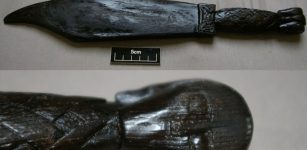 1,000-Year-Old Viking Weaver’s Sword Reveals Its Secrets
Archaeology | Apr 17, 2022
1,000-Year-Old Viking Weaver’s Sword Reveals Its Secrets
Archaeology | Apr 17, 2022

